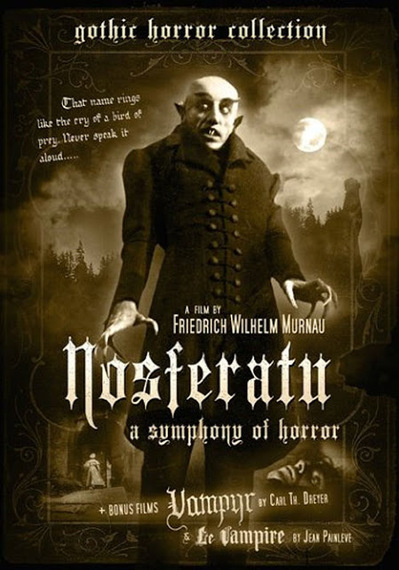
Nosferatu, also known as Nosferatu: A Symphony of Horror, is a 1922 silent Gothic horror film directed by the legendary German filmmaker F. W. Murnau. Murnau--a prominent figure in the German expressionist movement of the 1920s--is widely regarded as one of the most influential auteurs of the silent era of filmmaking. Nosferatu, starring Max Schreck as the vampire Count Orlok, was supposed to be an official adaptation of Bram Stoker's Dracula, but, after the studio failed to procure the rights of the book from Stoker's widow, the names and other details were deliberately adjusted so as to avoid the hassles of copyright infringement.
However, it was not enough to deceive the court, which ultimately delivered its verdict in the favor of Stoker's widow. After the film studio (Prana Film) declared its bankruptcy, the court instructed to destroy all the existing prints of Nosferatu. And if it wouldn't have been for the one surviving copy of the film, which had already been distributed all around the world, we would have surely been deprived of the privilege of savoring this true gem of cinema.
What makes Murnau's Nosferatu remarkable, in comparison to the countless other adaptations, is that apart from keeping the eerie feeling of Stoker's Dracula intact it also succeeds in doing away with the theatrical gimmicks that can often tear apart an entire narrative; Nosferatu relies heavily on the development of its characters as well as its plot. This enriches Murnau's characters with an inherent sense of realism that the characters in other cinematic renditions of Dracula are so ostentatiously devoid of.
For example, let's consider Max Schreck portrayal of Count Orlok. In contrast to the future portrayals of the character of Count Dracula on the celluloid, Count Orlok is exactly what the character demands it to be: a cursed creature depraved by centuries of hapless suffering and solitude as opposed to a celebrated glamour figure basking in the glory of its own grandeur. Nine decades later, Nosferatu not only enjoys a strong cult following but also continues to receive overwhelmingly positive reviews. Late Roger Ebert wrote in his review of Nosferatu: 'To watch F.W. Murnau's Nosferatu is to see the vampire movie before it had really seen itself. Here is the story of Dracula before it was buried alive in clichés, jokes, TV skits, cartoons and more than 30 other films. The film is in awe of its material. It seems to really believe in vampires.'
There is no denying the fact that the Murnau's Nosferatu is partly responsible for the universal popularity of Stoker's Dracula; Nosferatu not only made Stoker's epic vampire saga a household phenomenon but also immortalized Stoker's archetypal vampire as the supreme symbol of Gothic horror in the world of cinema. Till date, Nosferatu remains the most effective means for the uninitiated to get acquainted with Stoker's timeless tale of unrestraint terror. Nosferatu is an essential viewing for the students as well as cinema enthusiasts the world over.
(A version of this article was first published at A Potpourri of Vestiges)
 Like Us On Facebook |
Like Us On Facebook |  Follow Us On Twitter |
Follow Us On Twitter |